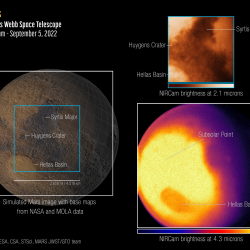What is the heliosphere?
The heliosphere is the region of our galaxy, the Milky Way, in which matter comes mainly from the Sun. The total pressure of the solar wind is higher there than that of the interstellar medium.
It has the shape of a long elongated gas bubble, inflated by the solar wind and results from the interaction between the corona, source of the solar wind, and the interstellar medium, in which the solar wind finally melts away.
How far does the heliosphere reach?
The boundary between the heliosphere and the surrounding interstellar medium is called the heliopause. The distance of the heliopause has been estimated at 100 AU (Astronomical Unit), i.e. 100 times the distance between the Earth and the Sun.
All the planets are inside the heliosphere. The Voyager probe crossed the heliopause in 2013.
Comets show traces of solar wind
The presence of the solar wind in interplanetary space had been assumed before space probes were launched, thanks to the observation of the tails of comets.
When approaching the Sun, comets, made of frozen gas, start to melt and two different tails are created: the dust tail and the plasma tail.
The dust tail is due to the pressure of sunlight.
The plasma tail, composed of ions, points in the direction opposite to the Sun because the electrically charged particles are guided by the interplanetary magnetic field carried by the solar wind particles.



